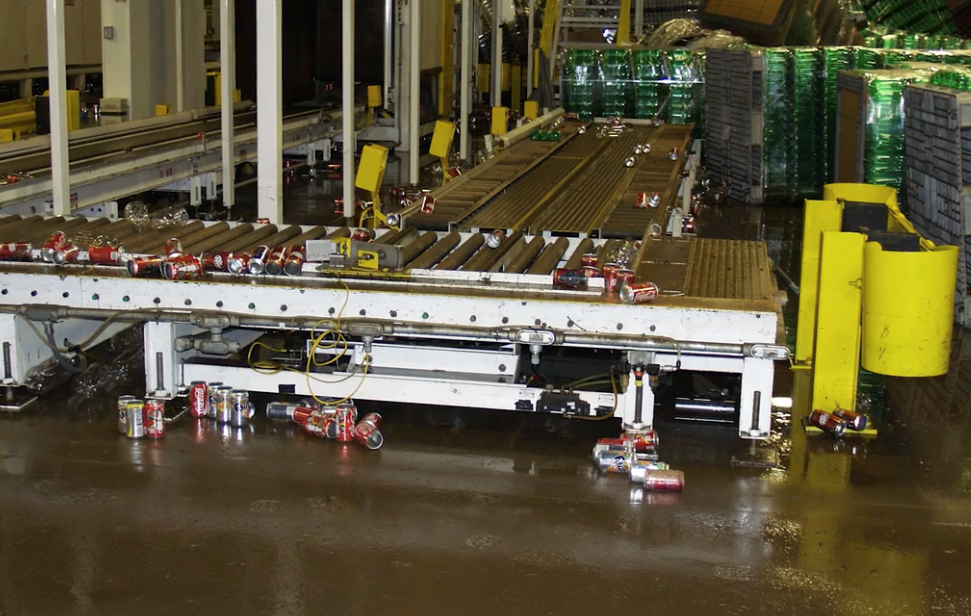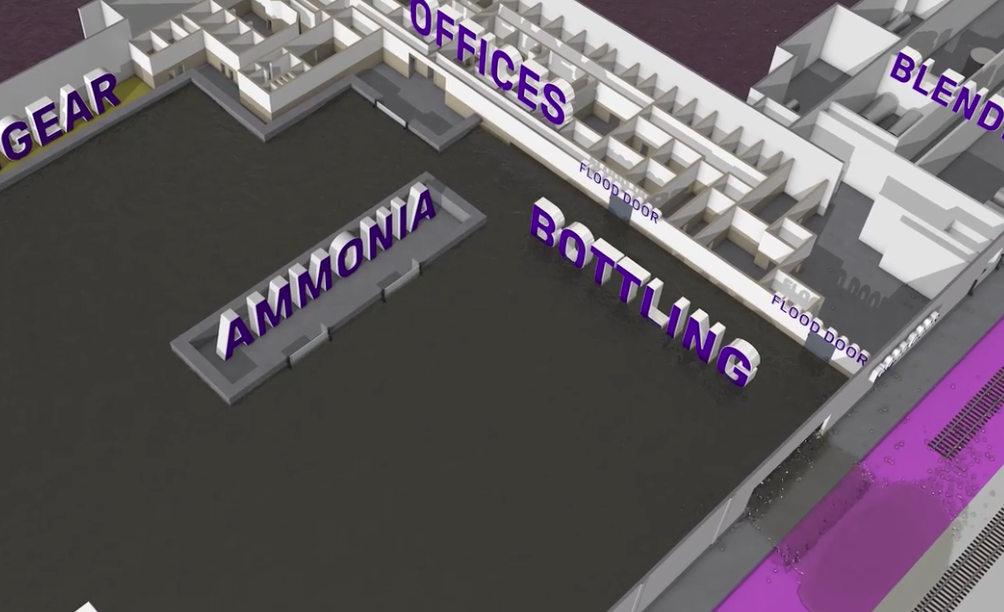Floods and Resilience
Reducing the impact of a flood
We often advise clients that the risks presented by climate change are increasing rapidly. For any organisation that has assets exposed to flooding, sea level rise or storms, mitigating these risks can be challenging. Here are a couple of success stories.
In May 2010, a major flood hit Coca-Cola’s 30,000 m2 bottling plant in Nashville, Tennessee. The facility is located in a high hazard, 100 year flood zone.
The flooded bottling facility during the 2010 flood which prompted the flood mitigation project.
Coca-Cola partnered with FM Global to develop a plan to protect their facility from future floods.
They decided they could not relocate the very large warehouse away from a known flood risk, so they developed a method to reduce the impact of the next inevitable flood. They protected critical production equipment within the facility using flood walls. This enabled them to let the flood waters flow into, and out of, the building.
Flood wall around the critical infrastructure and the flood door to allow the water to flow back out of the building.
Amazingly, they were able to verify the effectiveness of the solution during another serious flood in March 2021. See here for more details: https://www.fm.com/insights/coca-cola
Interestingly, the Reject Shop 26,000 m2 Distribution Centre in Ipswich, Queensland had a very similar experience. After the extensive flooding at the start of 2011, they installed a floodbarrier system around the DC. Again, they had the opportunity to test the barrier when another flood hit the area in 2013. There was no impact to the DC’s operations!
Resilience in the Cloud
The Uptime Institute recently published an excellent paper on the topic of the cost and benefits of purchasing increased resilience from cloud providers, using AWS as a case study. The baseline comparison was a system with no resilience installed. The study shows the cost of the increased resilience and the associated reduced downtime.
The author provides some wise advice:
"Unlike privately owned and co-located data centres, customers using the public cloud have no visibility or control over the datacentre used by their cloud provider. When architecting a cloud application, it is up to software developers to incorporate resiliency into their application architecture. Conversely, in amore traditional non-cloud application, data centre teams, infrastructure engineers and software developers should work together to meet resiliency requirements.”
"If customers use more resources to architect resiliency, they need to pay for those additional resources. The implication is that resiliency is neither included as standard nor guaranteed. Customers should design their applications to meet availability requirements and balance this objective against the cost."
As CIO’s are relinquishing control over the operation of their IT systems, it is imperative that the resilience requirements of each application and its data are fully specified in the service agreement with the cloud provider. APRA’s standard soon to come into effect, CPS 230, addresses many of the issues associated with outsourcing critical services to Third Parties. Source: https://intelligence.uptimeinstitute.com/resource/cloud-availability-comes-price



